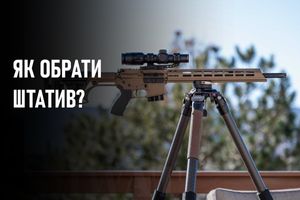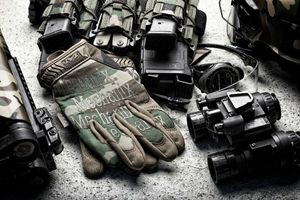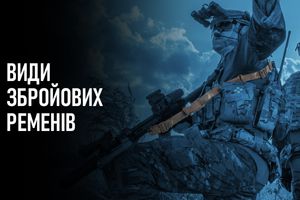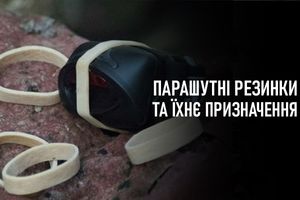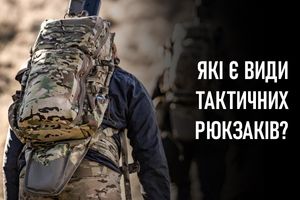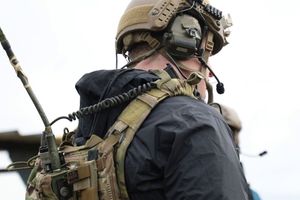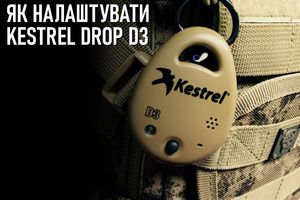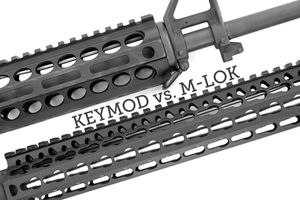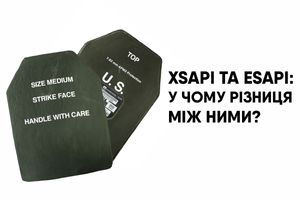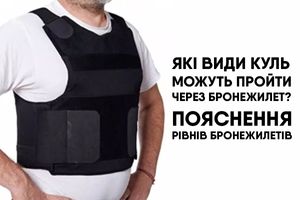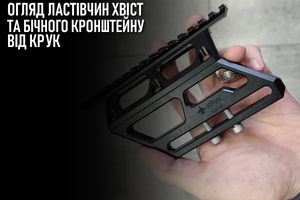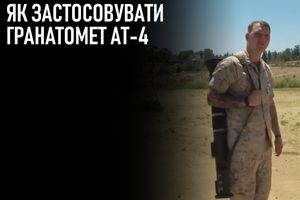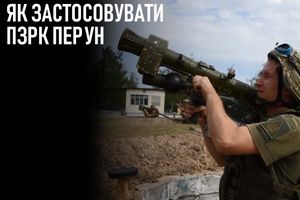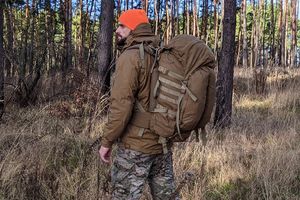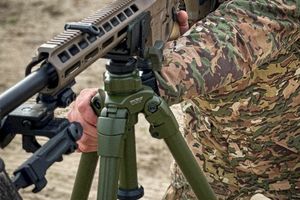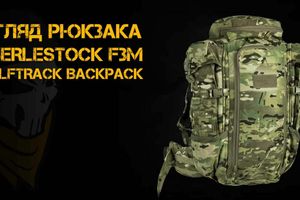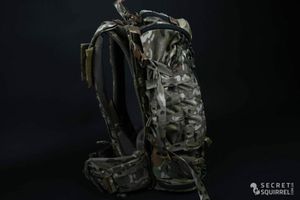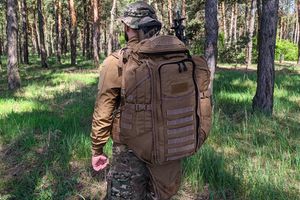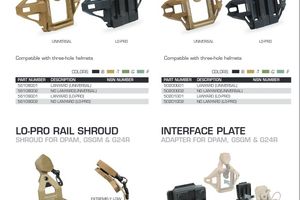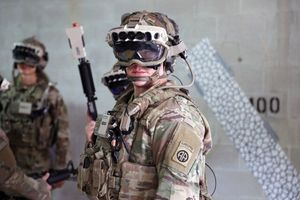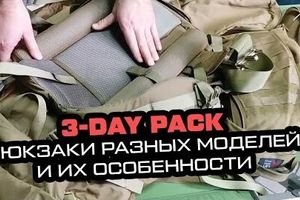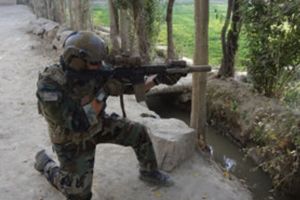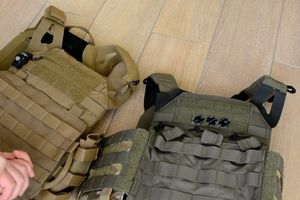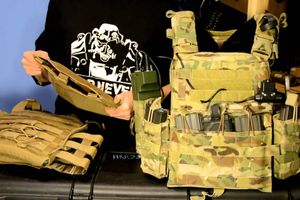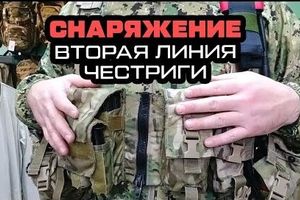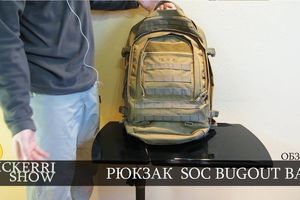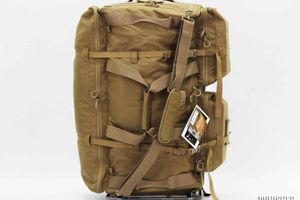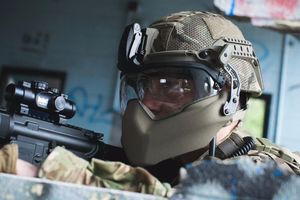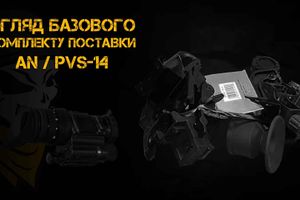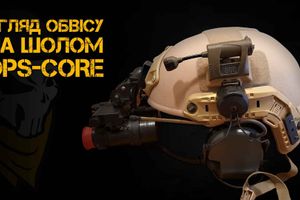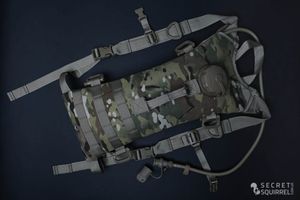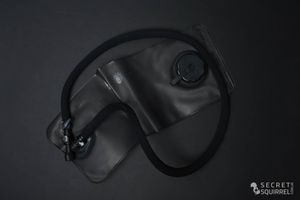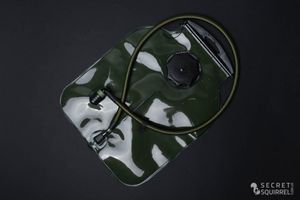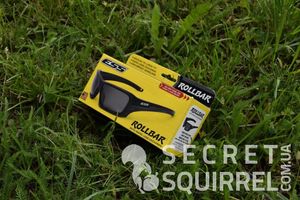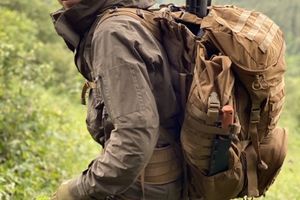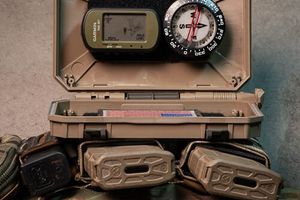Load Bearing Chest Vest w / Zipper from London Bridge Trading, aka LBT-1961-AR, is a compact but roomy bib from an American manufacturer, one of the top equipment suppliers for Tier 1 Operators under the command of the US Special Operations Forces (US SOCOM).
Perhaps few people knew about London Bridge Trading (LBT) back in 1985, when the company was founded, and a few years after that. And the whole point here, perhaps, is that at the dawn of her years she was engaged in the sale of military history items, ancient weapons and antiques (proof). It was under this name that Dr. Doug McDougal, the founder of the company, transformed his hobby of visiting thematic exhibitions, searching and reselling various curiosities, into an independent business aimed at supporting men and women in the armed forces USA.
The manufacturer of personal protective equipment, unloading equipment and other “tactical” nylon, London Bridge Trading began a little later, and worldwide publicity and recognition for the brand came in 2000. In fairness, I note that LBT received this recognition as a manufacturer who, in a short time, managed to establish the production of high-quality equipment for the needs and requirements of the Special Operations Forces soldiers, which were not quite typical at that time, including US Navy SEALs, including This, in part, was facilitated by the company's headquarters in Virginia Beach near Norfolk, where four units of this unit are based.
We must pay tribute to London Bridge Trading for the fact that with their relatively small size (to this day the company employs a little more than 250 people in 18 countries), they supply equipment to a large number of units from the law enforcement forces, federal agencies, security forces, armed forces and MTR not only the United States, but also many other states. Their platform vest LBT-6094A and bib LBT-1961A became so recognizable and recognized for their reliability and comfort that they even became a kind of standard in the industry, giving rise to a great many inheritances and replicas. I already told you about the design features of the LBT-6094A on the example of the Field Armor Vest from P1G-Tac, and today we will get acquainted with the LBT-1961-AR using the example of the original, which absorbed the following features.
- Four integrated double-row carrying pouches for up to 8 STANAG stores.
- Two integrated pouch for pistol magazines.
- Three integrated pouches for small items.
- Two integrated pouches for AN / PRC-148 or AN / PRC-152 radios.
- Two integrated utility pouches.
- Two integrated pouches for carrying grenades.
- Two built-in flat administrative offices with elastic loops for organizing small items.
- Front zipper for faster dressing and removal.
- Available colors: Coyote Brown, Mas Gray, Multicam, Multicam Tropic.
- Weight: 1.36 kg.
Further in the review, the LBT-1961-AR bib in camouflage Multicam colors is presented.
Since the bibs of the LBT-1961 series have been manufactured for quite some time, there are several generations in the history of this model, which, I think, it makes sense to mention. So, single experimental samples of this bib are found in the photo of the operators of the US Special Operations Forces dating back to 1991. By 2005, these models had already strengthened as serial models during the international war against terrorism, and received the marking LBT-1961-A. Distinctive features of this model were the inseparable unloading platform in the front part, and inherently ascetic straps without any additional attachment points. Since 2007, the LBT-1961-G model has become widespread, in which the straps have undergone significant refinement (fasteks for the backpack, elastic attachment points for wires and hoses, as well as PALS slings for pouches have been added), and a zipper has appeared in the front part to speed up dressing \ removal of the unloading system. At the same time, wide fastexes disappeared at the front for quick dumping of the platform, but mesh pockets appeared for placing floating elements on the inner surface of the unloading platforms. The LBT-1961-AR version has almost all the features of the previous two models (both zipper and in the center, and developed straps), it retained the fast folds at the junction of the straps with the platforms in the front, but does not have pockets for accommodating floating elements.
To make it easier to understand the essence of these design features and differences between the models, let's move on to familiarizing ourselves with the LBT-1961-AR bib, and start with the shoulder straps.

At LBT-1961-AR they are made according to the so-called "H-shaped" scheme, with a horizontal jumper in the area of the blades fastening the shoulder dampers to each other. In total, there are two inch fastexes on the straps for connecting to unloading platforms in the back, two more inch fastexes for attaching a hydration pouch or backpack, two rows of horizontal PALS lines in the back, soft shoulder dampers with elastic loops and vertical PALS lines on top of them, and two wide two-inch plastic fastekts in front for connection of straps with unloading platforms.

The 5 cm wide straps have a foam damping insert over the entire area, and allow you to evenly distribute the weight of the equipment over a large area, including the shoulders, shoulder blades and the front surface of the pectoral muscles. In the area of the collarbone on the straps there is a valve with Velcro area of 3.5 cm x 18 cm (width \ height), under which you can skip and fix bulky hoses of hydration systems and wires of communication equipment. The outer sidewall of this Velcro also has four elastic loops for fixing smaller wires and antennas of walkie-talkies.

On the back of the straps there is a jumper of a two-inch sling and Velcro area of 15 cm x 5 cm (width \ height), which provides the ability to fit the bib to a wide range of users, as well as used outerwear and armor protection. Below the lintel, at an angle of about forty-five degrees, two adjusting inch slings with National Molding buckles are fastened to the straps themselves, with which the straps are fixed to the back of the unloading platforms. The presence of an angle and a margin of adjustment within 45 cm. Again, it allows you to comfortably adjust the bib for yourself, and also does not allow slings to clump and cling to other elements of the equipment used, due to the presence of Velcro tacks.
But all of its carrying capacity and capacity LBT-1961-AR is provided not so much by the straps as by compact and lightweight unloading platforms with pouches, which I propose to get to know.
In total, the LBT-1961-AR model has two platforms, and both of them have dimensions of 28 cm. X 16.5 cm. (Width height). At the back, they are fastened with two inch buckles from National Molding, the upper pair of which is attached to the straps, and the lower one to the inch sling that tightens the bib in the lumbar region. At the top of the platforms is a two-inch buckle that connects to the front straps and provides quick discharge of the bib in case of injury or unplanned immersion in water. In front, both platforms have a zipper, which they are fastened to each other, providing the user with the opportunity to quickly fold or remove the bib like a normal jacket or vest.

The location of the built-in pouches on both platforms is mirrored with respect to the central lightning, therefore, with a detailed examination we will go through only one of them. The only exception is the pouch for two pistol magazines located on the right platform, but we will get to it a little later.

And to begin with, what LBT-1961-AR was originally meant to be - for carrying ammunition during foot raid operations using a backpack. For this task, on each platform there are two pouches with dimensions of 7 cm x 13 cm x 4 cm (width \ height \ depth) capable of holding up to two Stanag standard stores. To reduce the profile of pouches when removing one of the stores, their neck is equipped with an inch elastic, tightening the pouch as it empties. Thanks to them, the stores will be pressed against the inside of the pouch equally tightly, whether they are placed in two rows or just one. To protect the stores from falling out and getting small debris inside them, the pouches under the BC are equipped with 17 cm high valves with two hook and loop fasteners, each of which is located in such a way that the valve is equally effectively fixed when placing one or two stores inside the pouch. They adjoin with a flypaper of 7 x 4 cm. (Width \ height) located on the front edge of a mouth of a cartridge pouch.
Because not all users like Velcro as a valve retainer for magazine pouches due to the characteristic sound during opening and incomplete fixation in a dirty state, LBT-1961-AR valves are also equipped with an extension made of an inch sling with a margin of 11 cm and a plastic fastex for closure. Thus, you have the choice of which of the locking mechanisms to use: only Velcro (repulse fasteks), only fasteks (repulse velcro at the same time), or both velcro and fasteks in case you need maximum reliability, such as when landing from air and watercraft.

On the front wall of three of the four magazine pouches there is also an additional utilitarian pouch measuring 7 cm x 9.5 cm x 1 cm (width \ height \ depth), which can be used for useful little things that you need relatively fast access. In the photo above, in one of these pouches, the neck of which is insured with a small section of Velcro straps, there is a Suunto MC-2 Global compass, ideally suited here in size. A vertical sling that prevents loss of content is attached in front to a Velcro with an area of 7 cm x 4 cm (width \ height). It is also noteworthy that when placing only one store of the main weapons system inside the magazine pouch, its valve length is enough to close the neck of a small utility pouch. This feature, together with an adjustable fastex sling on the valve of the magazine pouch, can be used as an additional precaution in case of need.
Thanks to the presence of these small pouches with the proper degree of organization inside the LBT-1961-AR, you can carry not only military items, but also a great many related items (navigation devices, batteries for them, fire-fighting and survival equipment, etc.). As for placing these items inside utility pouches, I can note that it is much easier to quickly remove them when you use only one row of stores (4 pcs.) Instead of two (8 pcs.), But the size of these pouches is intentionally chosen in such a way that by filling them with stores, you can increase the overall combat “load” from 8 to 11 stores for the main weapons system. So the choice of content for small utility pouches remains with you.

The maximum number of stores used is unpaired, partly because the right unloading platform has only one small utility pouch. The second place was reserved for two vertical pouches measuring 3.5 cm x 8.5 cm x 2.5 cm (width \ height \ depth) intended for transporting pistol magazines or items with similar sizes (multitools, folding knives, etc.). This pouch is distinguished not only by its purpose, but also by a valve, whose height is already 15.5 cm. The Velcro on its inner surface is attached to two vertical Velcro with dimensions of 2.5 cm x 7.5 cm (width / height) on the front the wall of the pistol pouches, and corresponds in size to the velcro 7.5 cm x 7.5 cm (width \ height), sewn on the outer surface of the valve. The outer velcro on this pouch is most often used to place chevrons of units and other insignia, because the valve of the main magazine pouch located behind the pouch for pistol magazines does not have a fastex with a sling line, and is fixed only with Velcro.

Behind the magazine pouches on the LBT-1961-AR unloading platforms are two mortise pouches designed to carry communication devices. In the photo above, in my case, this is a Baofeng UV-5R walkie-talkie with an increased battery, but they were originally intended for MBITR portable radio stations (AN / PRC-148 or AN / PRC-152), which is due to the very impressive dimensions of the 9.5 cm pouch x 18 cm x 3 cm (width \ height \ depth). To fix the contents inside the pouch, its neck, as well as the neck of store pockets, have a dragging elastic and a vertical inch sling 23 cm long with fastex. For the sake of historical justice, I note that the tightening elastic slings on the necks of pouches for shops and radio stations were added to the bib starting with version LBT-1961-G, and were not available in versions LBT-1961-A.
As you can see, the LBT-1961-AR allows you to carry along with the ammunition two radios immediately "out of the box", without the use of any extensions or extra pouches, so he was very fond of military personnel of the command link and gunners from the US Air Force (JTAC and CCT) .

But this does not end the LBT-1961-AR payload, as on top of the mortise pouches for radio stations, on each platform there is one more utilitarian pouch with dimensions of 10 cm x 13.5 cm x 7 cm (width \ height \ depth). The dimensions of this pocket were initially selected for night vision devices (night vision devices) (AN / PRC-15 (M953) and analogs) so that the bib user could transport everything necessary for participation in raid operations both in daylight and in the dark. Naturally, nobody forces you to carry only NVD in it, and even the manufacturer himself claims this pouch as a universal container for transporting loose cartridges, medical and other equipment. But, nevertheless, some specifics for carrying “valuable” cargo in them remain and are expressed in two flat pockets in the bottom and flap, the necks of which are covered with elastic tape. They are designed to accommodate flat inserts that can add stiffness to the pouch. Thus, you have the opportunity to protect the pouch and contents from being crushed in case you fall or roll while the bib is on you. Also as an additional protection, but this time from loss of contents, the LBT-1961-AR utility pouches are equipped with a non-wiping lid, which is fixed to the pouch using seven buttons located at the neck of the pouch under the valve. Two of them are located at the side walls, and three more at the front wall of the pouch.
The pouch is completed by a 12 cm high valve with Velcro, additionally fixed by fastex on an 13 cm long sling. If the contents, for some reason, do not fit into the pocket itself in height, then the free supply of slings and fastex will still allow you to reliably fix it in the pouch. The front wall of the utility pouch is equipped with a Velcro tape measuring 10 cm x 10 cm (width \ height), where the reciprocal Velcro is fixed from the inner surface of the valve. In addition, by means of various adapters and holders with Velcro, a great variety of oversized auxiliary equipment (identifiers and insignia, writing accessories, chemical light sources, etc.) can be fixed to it, which can later be covered with a valve pouch.

On the front side wall of the LBT-1961-AR utility pouch there is another pocket measuring 6.5 cm x 7.5 cm. x 4 cm. (width \ height \ depth) for carrying grenades. To accomplish its purpose, this pouch has two horizontal slings for fixing brackets of hand grenades, a Velcro valve and a fixing strap with fastex over the valve. It’s quite a regular pomegranate cartridge pouch, optimized for all purposes.

Inside each of the LBT-1961-AR unloading platforms are flat administrative pouches measuring about 24 cm x 13 cm (width / height) where you can easily place notebooks, writing accessories, cards, documents and other important little things that you don’t need quick access, but which I would like to have with me during the mission.

The inner wall of this administrative department, adjacent to the user's body, is made of Velcro, which allows you to mount various adapters and holders for organizing equipment on it (example), using which you can further expand the "bearing" and organizational capabilities of LBT-1961-AR, and also mount holsters inside these pockets to hold pistols or other special tools.
On the same wall, in the upper part of the compartments, there is an elastic loop divided into five sections of 4 cm each. This additional administrative fixture from London Bridge Trading will allow you to organize and evenly distribute a wide range of small items needed during the assignment (writing accessories, chisi, lighters, cables, etc.). These pouches, like all the previous ones, are equipped with a wide grommet in the bottom for drainage of water that has got inside the pockets.

Between themselves, two unloading platforms LBT-1961-AR are connected using a very large YKK zipper with a height of about 16 cm. The runner deliberately closes the zipper from top to bottom so that the zipper does not stretch under the weight of the loaded bib and possible jerks when moving quickly, and also does not open on the surface when crawling in a plastic way.
In addition to the fact that the zipper allows you to throw the bib over your shoulders with the usual movement like a jacket or vest, and also provides quick dressing / removing, if necessary, quick access to the body, the presence of a zipper in the front allows you to unfasten the bib during a prolonged lying down. This feature provides you not only more comfort, but also a lower profile, removing a layer of several stores between you and the ground. This design feature will be very relevant when organizing ambushes, as well as staying at an observation post for a long time. If necessary, you can also quickly switch from a lying position to a standing position and even to run, leaving all your equipment with you, and you can fasten a zipper quite quickly at the first suitable opportunity.
And finally, a few photos of the LBT-1961-AR bib on the user. Front view:

And behind:

As you can see, with the external compactness and relative lightness of the bib, due to its thoughtful and balanced cut, it was possible to place the following equipment on it without problems:
- 6 stores of the AR series, and there is still room for at least two additional ones.
- 2 pistol magazines
- 2 Baofeng UV-5R radios with larger batteries, Nagoya NA-771 antennas and tangents.
- Knife Morakniv Garberg Carbon Multi-Mount.
- Set for primitive navigation from the Suunto MC-2 Global compass, pedometer accounts and Rite-in-the-Rain notebook. Inside the administrative pouch, a map also easily fit.
- First aid kit Cargo Pocket FAK.
- The minimum survival kit from a thermal blanket, flint, fire-fighting equipment, SOG Powerlock multitool, Fenix HL21 headlamp and other useful little things.
For all this, there was still plenty of space inside the built-in pockets, and some of them, such as grenade pouches on the walls of utility pockets, turned out to be completely empty. Based on this, I can confidently say that the LBT-1961-AR is a very lightweight, balanced and capacious solution for placing priority equipment for patrol and raid operations using a backpack.
We thank punisher.com.ua for the sample LBT-1961-AR provided for review.
Source: https://secretsquirrel.com.ua
Posted by: MAD










































































































































